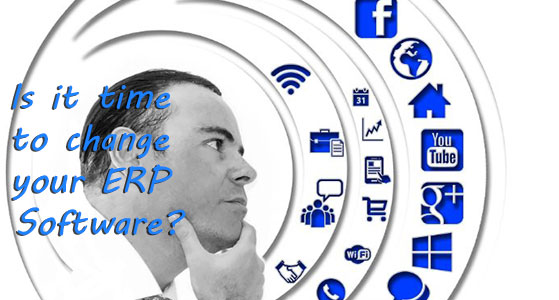Home

The Silicon Review
>>
Industry>>
Erp>>
Is it time to change your ERP ...Is it time to change your ERP Software?
The Silicon Review
20 August, 2016
ERP has become a blockbuster hit in the last couple of years. Various enterprises from different verticals such as IT, Manufacturing, Healthcare, Financial Services, etc. have been using it to improve the efficiency and productivity of their business. Choosing the right ERP software is critical for any business. Once you have installed it, maintenance is minimal. However, every product has however got a shelf life. How long can you use it before you change it to a brand new one released in the market?
The following are the top factors that indicate it’s time for new ERP software for your company:
- Gaps in the Functionality
Your software will need an immediate replacement when you start noticing some functionality gaps in it, especially when your business ventures into a new industry or embarks on new business models. This is mainly because the software has become outdated. Many businesses may try to address these gaps by adding external components to the system, or moving functionality outside the ERP system altogether. In the long term, independent and/or patched systems will need to interface and integrate to deliver optimal value, and ensuring that they do so can prove complex and costly. Investing in an advanced new ERP system ensures that all the functionality required by the business today is delivered in an integrated solution capable of meeting the business’s changing strategic needs over the next few years. - Upgrades and updates
For ERP software, updates and upgrades should be released at regular intervals to ensure that the solution keeps delivering in a changing environment. If you don’t receive any upgrades or updates from your vendor, you have reason to get concerned. Technology and market trends constantly change, a fact that mobile app developers are well aware of. This approach is impacting development in the enterprise space as well, where businesses are beginning to expect their solutions to keep up with changing technology developments. - Business Intelligence and graphics
Business intelligence is nowadays getting integrated with ERP for better analysis of data. Old ERP systems typically do not offer many built-in BI tools. ERP systems have been notorious in the past for their lack of visual appeal, with much of the available data displayed as text. However, in an app economy, users expect more from solutions. Today’s business decision makers are exposed to mobile apps that are attractive and intuitive, and want to enjoy the same experience when using their enterprise systems. They want instant access and the power to analyze their data using attractive, user-friendly interfaces. If your ERP software does not deliver, it is time to upgrade. - Cloud support
Cloud computing is the future of enterprise systems. ERP systems that are not cloud ready will not stand the test of time as businesses increasingly discover the benefits of cloud-based enterprise systems.When considering a move from an outdated ERP system to one capable of meeting current and future enterprise needs, organizations typically raise cost, fears of implementation complexity and resistance to change as their main concerns. Until recently, these concerns may have been valid: as little as two years ago a seven-user ERP system may have required a significant investment and taken months to implement. However, times have changed. The same functionality in an on-premise solution is now available on a subscription model with little upfront investment and implementation possible in as little as four weeks, often to the great surprise of customers.









